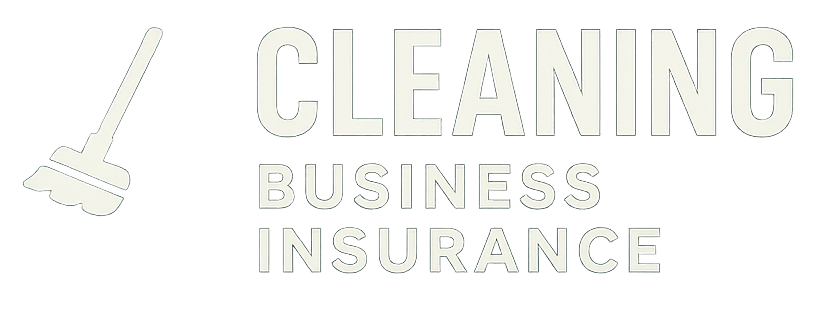Running a cleaning business in California comes with unique risks, including accidental damage to client property, tools, or commercial equipment. Even a small incident can quickly escalate into a costly claim if not handled properly. One of the most critical skills for any cleaning business owner is knowing how to document and report property damage effectively to ensure insurance claims are processed smoothly. Proper documentation can protect your business from disputes, minimize financial loss, and maintain client trust.
Understanding the Importance of Accurate Documentation
When property damage occurs, your first step should always be to accurately document the incident. Many cleaning business owners underestimate the importance of immediate and detailed records, but insurance companies rely heavily on this information to evaluate claims. Documentation serves multiple purposes: it provides proof of the damage, establishes a timeline, and shows that you took responsible action in handling the situation.
Accurate documentation is particularly important in California, where cleaning businesses handle high-value properties such as luxury homes, commercial offices, and medical facilities. A poorly documented incident can result in claim delays, reduced compensation, or even outright denial of the claim. Therefore, adopting a systematic approach to reporting property damage is essential.
Step 1: Immediate Response to Property Damage
The first step in effective property damage documentation is responding immediately to the incident. Ensure that your employees are safe, stop any ongoing damage, and secure the area to prevent further losses. Quick action demonstrates professionalism and minimizes the overall impact of the damage.
Next, notify the property owner or client as soon as possible. Open communication is crucial. Informing them promptly shows responsibility and allows them to take steps to mitigate further damage. Avoid making assumptions about fault or liability—simply provide factual information about what occurred.
Step 2: Capturing Detailed Evidence
Once the situation is under control, the next step is to capture thorough evidence of the damage. High-quality photos and videos are the most effective forms of documentation. Take multiple angles and include close-ups to clearly show the extent of the damage. For example, if a cleaning technician accidentally spills a chemical solution on a carpet, photograph the affected area, surrounding items, and any protective measures that were in place.
It’s also important to maintain a written record of the incident. Include details such as the date, time, location, individuals involved, and a description of what happened. Any witness statements, whether from employees or clients, should be included as well. This comprehensive documentation builds a strong case for your insurance provider.
Step 3: Collecting Supporting Documentation
Beyond photos and written reports, gather all supporting documentation that can strengthen your claim. Receipts for cleaning equipment, invoices for repairs, and maintenance logs can all serve as proof of value and pre-existing conditions. If the damage involves a third party, such as a contractor or subcontractor, include their contact information and any relevant contracts.
In California, many cleaning businesses operate under strict contractual obligations with commercial clients. Maintaining thorough records of service agreements and liability clauses can help clarify responsibilities during the claim process. This ensures that your insurance provider understands the context of the damage and can assess your claim accurately.
Step 4: Reporting to Your Insurance Provider
Once you have gathered all the necessary documentation, report the incident to your insurance provider immediately. Delays in reporting can result in complications or denial of coverage. Provide your insurance company with a complete file of photos, written reports, receipts, and any other supporting documentation.
When filing a claim, be honest and precise in your descriptions. Avoid exaggeration or speculation, as inconsistencies can harm your credibility. Many insurance providers have online portals or claim forms specifically designed for commercial cleaning businesses, which help streamline the process and reduce errors.
Step 5: Maintaining an Organized Filing System
To ensure efficiency and preparedness for future incidents, develop a consistent filing and record-keeping system. Digital records, including scanned copies of invoices, receipts, and reports, are ideal because they are easy to organize, search, and share with insurance companies.
A well-organized system also helps track the status of ongoing claims and ensures compliance with California insurance regulations. By maintaining detailed records, you can quickly provide information to your insurance company, reduce processing time, and demonstrate that your business operates responsibly.
Step 6: Preventative Measures and Employee Training
Effective documentation goes hand in hand with preventing property damage in the first place. Train your employees on proper cleaning procedures, safe handling of chemicals, and how to respond to accidents. Regular safety meetings, checklists, and clear protocols reduce the likelihood of incidents and make reporting more straightforward when damage does occur.
Additionally, consider having a damage log or incident report form available at all times. Employees should know exactly what steps to take and what information to record immediately after an accident. This ensures consistency and completeness in documentation, which benefits both your business and your insurance provider.
Conclusion
Property damage is an unfortunate reality for cleaning businesses in California, but proper documentation and reporting can make the difference between a smooth insurance claim and a costly dispute. By responding immediately, capturing detailed evidence, collecting supporting documents, reporting promptly to your insurance provider, and maintaining an organized filing system, your cleaning business can navigate claims efficiently and professionally.
Preventative measures and employee training further minimize risk and reinforce your company’s credibility with clients and insurance providers alike. By following these best practices, cleaning business owners can protect their operations, maintain client trust, and ensure that insurance claims are resolved effectively and fairly.
